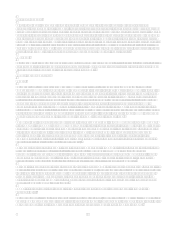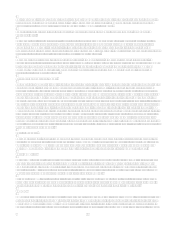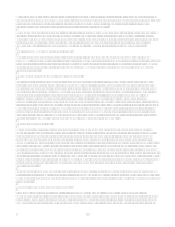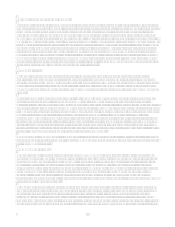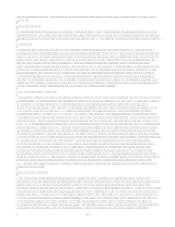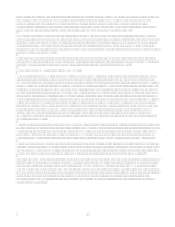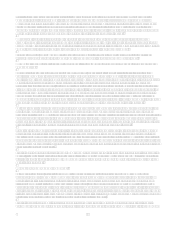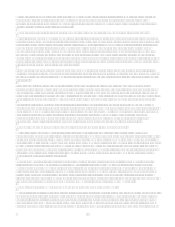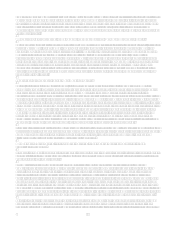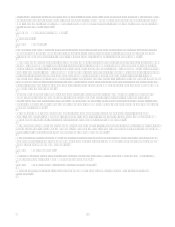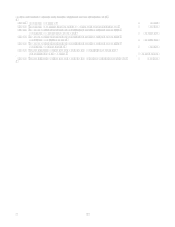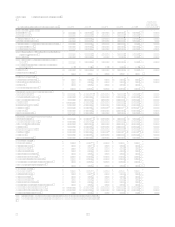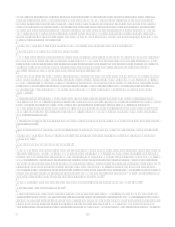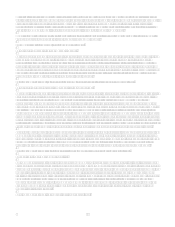Capital One 2006 Annual Report Download - page 37
Download and view the complete annual report
Please find page 37 of the 2006 Capital One annual report below. You can navigate through the pages in the report by either clicking on the pages listed below, or by using the keyword search tool below to find specific information within the annual report. 19
We May Experience Increased Delinquencies and Credit Losses
Like other lenders, we face the risk that our customers will not repay their loans. Rising losses or leading indicators of rising
losses (higher delinquencies, non-performing loans, or bankruptcy rates; lower collateral values) may require us to increase
our allowance for loan losses and may degrade our profitability if we are unable to raise revenue or reduce costs to
compensate for higher losses. The favorable credit environment we have experienced may not continue. In particular, we face
the following risks in this area:
Missed Payments. We face the risk that customers will miss payments. Loan charge-offs (including from
bankruptcies) are generally preceded by missed payments or other indications of worsening financial condition.
Our reported delinquency levels measure these trends. Customers may be more likely to miss payments in the
event of an economic downturn. In addition, we face the risk that consumer and commercial customer behavior
may change (i.e. an increased willingness to fail to repay debt), causing a long-term rise in delinquencies and
charge-offs. Our bankruptcy experience is generally correlated with national bankruptcy filing trends.
Collateral. We face the risk that collateral, when we have it, will be insufficient to compensate us for loan losses.
When customers default on their loans and we have collateral, we attempt to seize it. However, the value of the
collateral may not be sufficient to compensate us for the amount of the unpaid loan and we may be unsuccessful in
recovering the remaining balance from our customers. Particularly with respect to our commercial lending and
mortgage activities, decreases in real estate values could adversely affect the value of property used as collateral
for our loans and investments. Thus, the recovery of such property could be insufficient to compensate us for the
value of these loans.
Estimates of future losses. We face the risk that we may underestimate our future losses and fail to hold a loan loss
allowance sufficient to account for these losses. Incorrect assumptions could lead to material underestimates of
future losses and inadequate allowance for loan losses. In addition, our estimate of future losses impacts the
amount of reserves we build to account for those losses. The build or release of reserves impacts our current
financial results.
Underwriting. We face the risk that our ability to assess the credit worthiness of our customers may diminish. If
the models and approaches we use to select, manage, and underwrite our consumer and commercial customers
become less predictive of future charge-offs (due, for example, to changes in the competitive environment or in the
economy), our credit losses and returns may deteriorate.
Business mix. We face the risk that our business mix will change in ways that could adversely affect credit losses.
We participate in a mix of businesses with a broad range of credit loss characteristics. Consequently, changes in
segment mix may change our charge-off rate. In addition, significant changes in our organic growth rate may
change our charge-off rate since young accounts tend to have lower charge-offs than older accounts (i.e. slower
organic growth may drive a higher charge-off rate).
Charge-off recognition. We face the risk that the rules governing charge-off recognition could change. We record
charge-offs according to accounting practices consistent with accounting and regulatory guidelines and rules.
These guidelines and rules, including among other things, the FFIEC Account Management Guidance, could
change and cause our charge-offs to increase for reasons unrelated to the underlying performance of our portfolio.
Mortgage repurchases. We face the risk that we may be required to repurchase mortgage loans that we sell to
investors in the event that there was improper underwriting or fraud. Typically, loans are put back to originators if
they experience delinquencies. Consequently, we may be exposed to credit risk associated with sold loans. We
hold a reserve against this risk, but we face the risk that the reserve will not be adequate.
Industry practices. We face the risk that our charge-off and delinquency rates may be impacted by industry
developments.
We Face Risk of Interest Rate Fluctuations
Like other financial institutions, we borrow money from other institutions and depositors, which we use to make loans to
customers and invest in debt securities and other earning assets. We earn interest on these loans and assets and pay interest on
the money we borrow from institutions and depositors. Changes in interest rates, including changes in the relationship
between short term rates and long term rates, may have negative impacts on our net interest income and therefore our
earnings. If the rate of interest we pay on our borrowings and deposits increases more than the rate of interest we earn on our
assets, our net interest income, and therefore our earnings, would fall. Our earnings could also be negatively impacted if the




